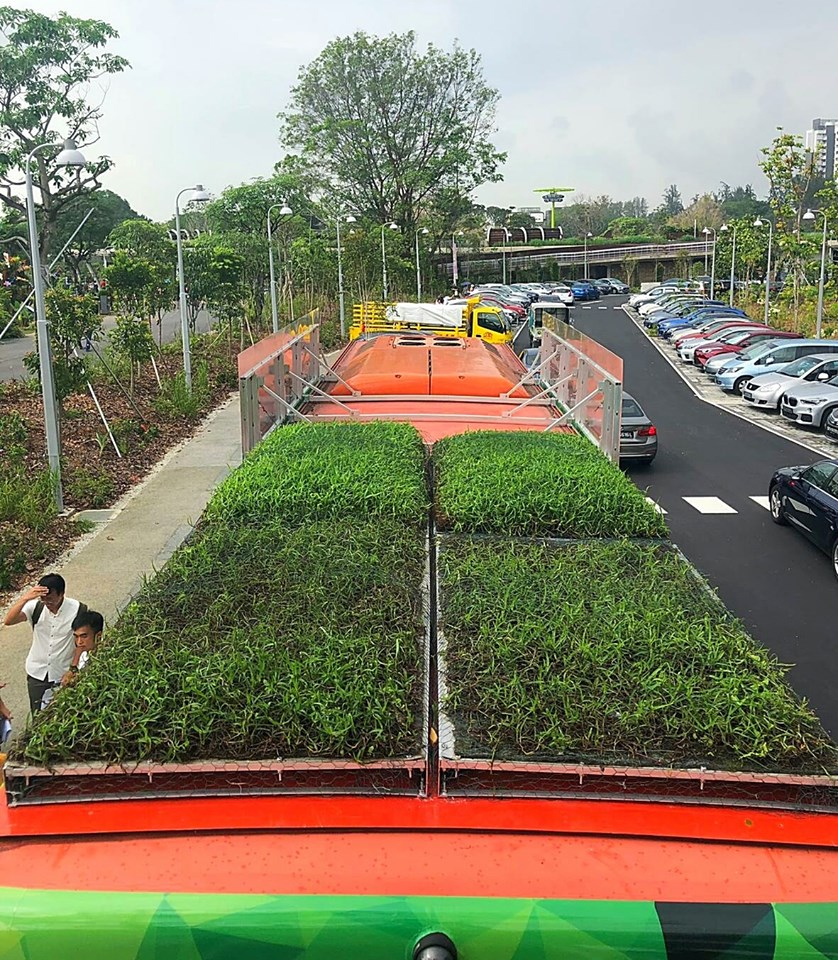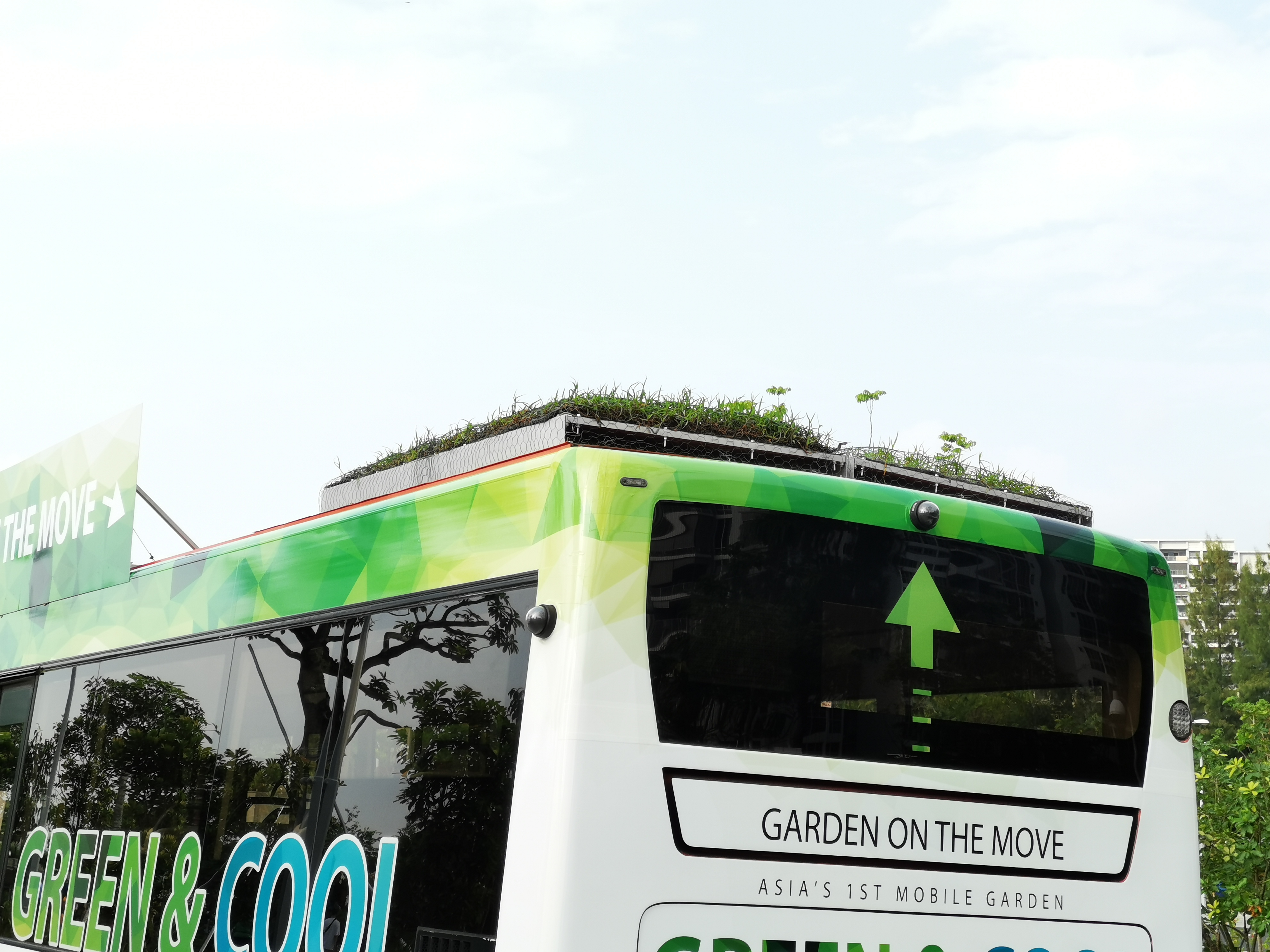
If not for the foresight of its founding father Lee Kuan Yew, Singapore may have developed into an urban, concrete jungle.
But instead it is a land of forest reserves, parks, skyrise greenery and vertical gardens.
And now taking one more step towards becoming a full-fledged "City in a Garden," Singapore has decided to add greenery to the roofs of its public buses.
Aptly named "Garden on the Move," the initiative has been funded by the Temasek Foundation, with support from Moove Media, National Parks Board and the Singapore Green Building Council.
Leading the project is GWS Living Art - a company that specialized in urban greening and sustainable living.
CGTN spoke to GWS Living Art's founder, Zac Toh. He explained that the bus roofs are fitted with a soil-less system. Instead of soil, the plants are placed on a lightweight mat similar to the one used for skyrise greenery on buildings.
"The system is made from this very thin piece of mat" and a mix of fibers are used "to create this 35 mm mat green roof system that we actually just place on the bus."

One of the ten Singapore public buses with green roof systems/Photo Singapore Green Building Council. /CGTN Photo
The mats are basically like a thin carpet.
Zac explained that on a regular green roof, "you need to put about 150 to 300 mm of soil or other kind of plastic system. This translates into just a mat, a 35 mm piece of mat, so the reduction of weight is almost four times. Usually your normal green roof system is 150 kgs per meter square. This becomes like 25-40 kgs."
GWS worked closely with "SBS Transit (Singapore’s public transport operator) and Moove media to make sure the system is safe" and does not fly off the moving bus.
Terrence Tan, a research fellow at the School of Design and Environment at the National University of Singapore and an advisor to the study, told us that the plants selected for this project are "robust" and known to be able to survive under strong wind conditions. "One of them is a succulent and it can basically store a lot of water inside, so minimum maintenance is required."
"When they wash the bus manually, they just water the green roof. Then if there is rain, then the greenery will be watered by the rain, " added Zac Toh.
Zac Toh informed us that "the idea really came about two to three years ago. National Parks actually floated the idea of putting green on buses and on bus stops."
GWS Living Art took up the challenge as they had already created the mat system called Gaiamat, which was eventually installed on the buses.
The campaign is part of a three-month study to test whether green roofs can be used to decrease the temperature inside the bus, thereby reducing the need for air conditioning. This in turn is expected to reduce fuel consumption of the vehicles.
"From the studies on green roofs and green walls on buildings, we have seen that the temperature reduction can be between 20 to 30 degrees. That is a significant reduction. Obviously when we have green roofs on moving vehicles, it may be slightly less, but it should still be significant," said Tan.
Tan will be evaluating the effectiveness of the green roofs based on the outcome of the study.
"At this stage, this is a trial and the period of this trial is about three months, so some questions that we want to answer – fundamentally is there significant reduction in temperature. That will set the basis of further study, which may include covering the entire roof. Currently, only a small portion of the bus roof is covered, but we want to see how we can impact the temperature of the roof surface."

Green roof buses that use a lightweight, soil-less mat as the base for the plants/Photo Singapore Green Building Council /CGTN Photo
The Singapore Green Building Council (SGBC) is a non-profit organization which advocates for green building design, practices and technologies and drives environmental sustainability in the construction industry.
GWS's mobile green roof was certified under the SCBC's Singapore Green Building Product certification scheme.
The president of SGBC, Dr Ho Nyok Yong, spoke to CGTN about the SGBC’s interest and role in the project.
"We are interested for two reasons: first one, of course, we are championing green buildings and environmental sustainability in Singapore. I think putting the roof system on the buses is very innovative because the bus will move to the city, it will move into the heartlands" and generate interest towards greening within the public.
The buses also seek to build on the Singapore Green Building Council's earlier "Live.Work.Play.Green" campaign that also involved public buses, to raise awareness on the sustainability benefits of green innovation for buildings and other green features.
Dr Ho adds that the SGBC is "very conscious about public outreach."
"Last year, we changed the bus into a green color. These buses normally go to town, city and go to heartlands and we attracted a lot of attention."
"It was very successful. There were a fleet of buses running from the town to the rural areas and also to the HDB flats. This picked up interest from everybody."
How the system gets replicated on more buses will depend on the outcome of the study.
However, Terrence Tan adds that "by having greenery on top of buses, technically, you are greening up the urban landscape and effectively improving the environment collectively."
SGBC's Dr Ho summarizes the potential advantage for us.
"Greens cool down everything, it even gets people talking. In a nice environment, you work happily, stay happily."
(If you want to contribute and have specific expertise, please contact us at nature@cgtn.com.)

Copyright © 2018 CGTN. Beijing ICP prepared NO.16065310-3
Copyright © 2018 CGTN. Beijing ICP prepared NO.16065310-3